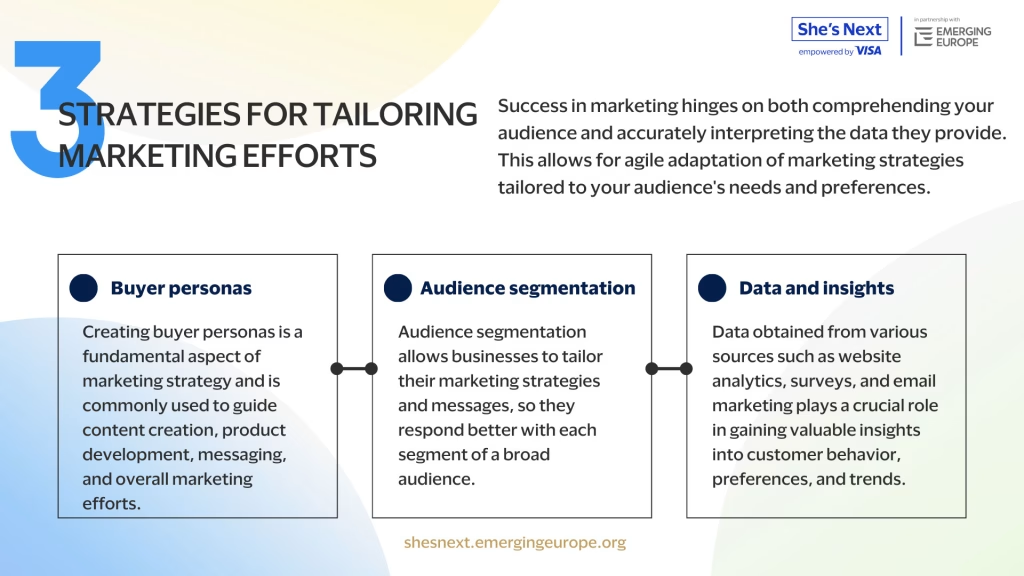
Understanding Your Audience: A Guide to Tailoring Marketing Efforts
In the realm of marketing, knowing your audience is essential, but truly understanding it is equally vital. Yet, grasping the complex details about your target demographic is no easy feat, especially for beginning entrepreneurs. Fortunately, there are methods and strategies to unravel the mystery of audience comprehension. In this guide, we’ll explore a curated selection tailored to assist you on this journey.
Creating buyer personas
In simple words, creating a buyer persona means describing your ‘average’ customer. But of course, there is something much more complex behind this marketing technique. However, the outcome is worth the effort as creating buyer personas is a fundamental aspect of a marketing strategy and is commonly used to guide content creation, product development, messaging, and overall marketing efforts.
Start with gathering information and statistics about your average customer base, done via surveys, interviews and general analytics. You can dive into the details of market research by reading our article ‘Understanding Your Audience: A Guide to Defining Your Target Audience’. Once enough information has been gathered you can proceed to detailing the representations of your ideal customers.
Audience segmentation
Audience segmentation is the process of dividing a broad audience into smaller, more defined segments based on specific characteristics or interests. This allows businesses to tailor their marketing strategies and messages, so they respond better with each segment.
There is a variety of distinct categories that comes with audience segmentation, here are a few examples to get started:
Demographic segmentation – This includes the audience’s age, gender, income, occupation, and several other factors in this area.
Psychographic Segmentation – This includes the audience’s psychographic behaviour like lifestyle, values, interests, personality traits and other factors in this area.
Geographic segmentation – This includes the audience’s geographic areas such as, location, climate, and other factors in this area.
Audience segmentation isn’t a one and done deal, it needs consistent maintenance and adjustment to remain effective in a dynamic market environment so if you are going to focus on audience segmentation then make sure to put constant effort into it.








Responses